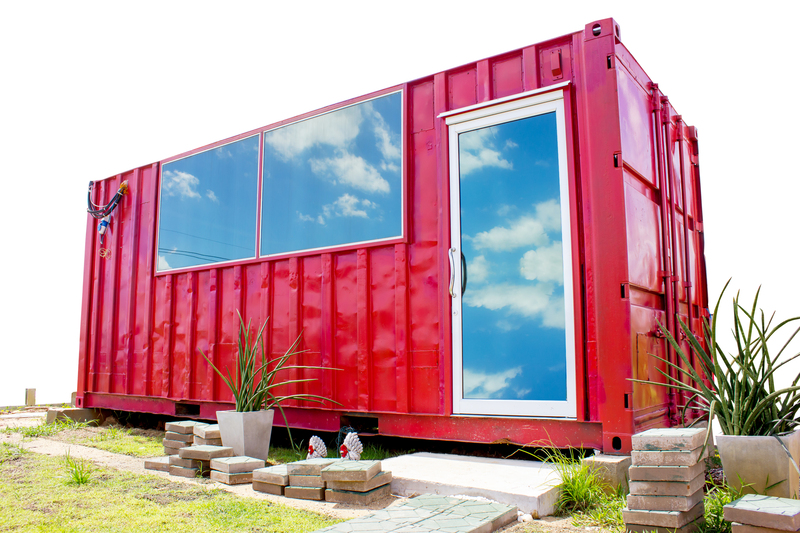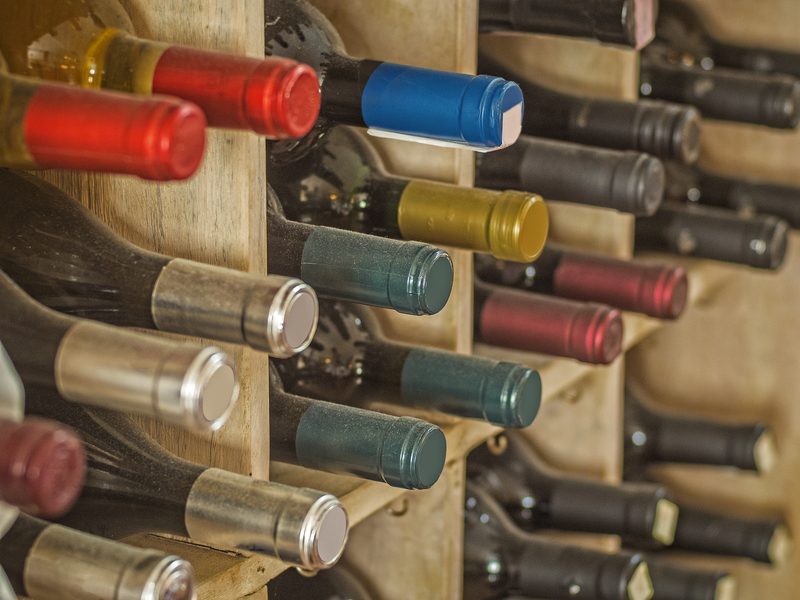Revolutionizing the Way We Dispose of Plant Pots
Posted on 30/09/2025
Revolutionizing the Way We Dispose of Plant Pots
Plant pots are a gardening staple, but what happens when their useful life ends? For decades, millions of spent containers have quietly filled landfill sites around the world. Today, that's changing fast. Innovative methods, materials, and approaches are revolutionizing how we dispose of plant pots, making gardening more eco-friendly and sustainable than ever before.

Why Traditional Plant Pot Disposal Is a Problem
While gardening is about nurturing nature, the potholders themselves have become a significant environmental concern. Let's examine why traditional plant pot disposal methods are falling short:
- Plastic Waste: Most disposable plant pots are made from non-biodegradable plastic, contributing to pollution and landfill overflow.
- Limited Curbside Recycling: Many municipalities do not accept plant pots in standard plastic recycling streams due to size, residue, and plastic type.
- Resource Depletion: The production of new pots uses fossil fuels and water, further impacting the environment.
- Outdated Disposal Habits: People often lack knowledge about alternatives and simply throw pots into household trash bins.
The challenge is clear: We need to rethink plant pot disposal for the health of our planet.
Decoding the Types of Plant Pots and Their Disposal Challenges
Not all pots are created equal! Understanding the types helps users select sustainable disposal strategies:
Common Plant Pot Materials
- Plastic Pots: Usually made from polypropylene (resin code #5) or polystyrene (resin code #6).
- Terracotta and Clay Pots: Natural but often treated with glazes that can complicate recycling.
- Biodegradable and Compostable Pots: Made from coir, peat, paper, or starch blends.
- Metal and Ceramic Pots: Durable but rarely curbside recyclable.
Disposal Dilemmas for Traditional Plant Pots
- Contamination: Soil residue, labels, and adhesives can contaminate recycling.
- Plastic Identification: Many facilities cannot process all types or colors of plastics used in garden containers.
- Sheer Volume: With millions sold each year, the cumulative waste is staggering.
This makes the search for smarter plant pot disposal solutions not just a trend, but an urgent necessity.
Innovative Solutions for Sustainable Plant Pot Disposal
1. Buy-Back and Recycling Programs
Major garden centers and nurseries are leading the charge by introducing pot recycling and recovery schemes.
- Drop-off Points: Customers can return used pots to specific bins at participating locations.
- Closed-Loop Recycling: Collected pots are professionally cleaned, shredded, and re-manufactured into new horticultural products.
- Community Collection Drives: Local councils or environmental groups organize periodic events to gather bulk quantities of old containers.
RHS Plant Pot Recycling Initiatives in the UK have shown how practical partnerships can divert tons of plastic from landfills every year.
2. Biodegradable and Compostable Plant Pots
Thanks to recent innovations, many nurseries now offer biodegradable plant pots made from renewable materials:
- Coir and Peat Pots: These break down naturally in the soil, feeding the plant's root system and enriching the ground as they decompose.
- Paper Pulp or Cardboard Pots: Lightweight, compostable, and suitable for direct planting.
- Starch-Based Bioplastics: Engineered to decompose in industrial composting facilities.
Disposing of these pots is as simple as planting them directly or adding them to your home compost, reducing waste and nurturing the next generation of plants.
3. Upcycling and Creative Reuse
Gardeners worldwide have embraced pot upcycling as a way to breathe new life into used containers:
- DIY Planters: Give old pots an artistic makeover with paint, mosaics, or decoupage.
- Organizers and Storage: Stack sturdy pots for tool or seed storage in sheds and greenhouses.
- Educational Projects: Schools use old pots for science experiments or craft lessons.
This creative mindset keeps waste out of the landfill while sparking joy and ingenuity.
4. Advanced Materials: Circular Economy in Action
Research into sustainable plant pot materials is opening new doors:
- Recycled Plastic Pots: Constructed entirely from post-consumer waste, often marked with visible recycling codes for reuse.
- Bio-Resins: Made from agricultural waste or biopolymers, these new-generation pots offer durability with a reduced environmental impact.
- Smart Design: Modular pots made for easy cleaning, stacking, and continuous reuse.
Manufacturers aiming for a circular pot economy design products that can be remelted, refashioned, or composted at the end of their life, minimizing waste down to nearly zero.
5. Municipal and Nationwide Recycling Innovations
Some local authorities have invested in specialized recycling facilities for hard-to-process plastics, including plant pots.
- Facilities employ advanced sorting systems to separate pots from other plastics.
- Public campaigns educate residents on how to clean, sort, and deliver pots for recycling.
- Collaborations with recycling firms ensure collected pots are actually transformed into new products, closing the loop.
Regions like Canada, Germany, and Japan are at the forefront of these ambitious recycling programs, providing blueprints for other countries to follow.
The Environmental Benefits of Better Plant Pot Disposal Methods
Progress in eco-friendly plant pot disposal pays off in multiple ways:
- Reduced Landfill Waste: Diverting pots from landfills means less pollution and lower long-term costs for local governments.
- Lower Carbon Footprint: Recycling and composting plant pots cuts greenhouse gas emissions associated with manufacturing and waste incineration.
- Resource Recovery: Remanufacturing saves raw materials, water, and energy.
- Cleaner Communities: Less litter around parks, gardens, and public spaces.
- Increased Biodiversity: Compostable pots enrich the soil and support healthy ecosystems.
The ripple effects of smarter plant pot disposal strategies extend far beyond the garden gate.
How Gardeners and Consumers Can Help
1. Choose Sustainable Pots
- Opt for compostable or biodegradable pots whenever possible.
- Look for labels that specify recycled content or full recyclability.
- Ask your local nursery about their pot recycling policies.
Every sustainable choice counts!
2. Clean and Prepare Pots for Recycling
Contaminated pots are often rejected by recycling facilities. Before recycling:
- Remove all soil, plant debris, and labels.
- Rinse with water and let them dry.
- Sort by plastic type if required by your recycling program.
3. Participate in Pot Swap or Take-Back Initiatives
- Return undamaged pots to nurseries participating in reuse programs.
- Join or organize a local pot exchange to share excess containers.
4. Get Creative
- Repurpose pots as storage bins, seed trays, or craft projects at home or school.
- Use broken pots as drainage at the bottom of larger planters or in mosaic art.
5. Advocate for Change
- Support businesses and brands leading the charge on sustainable packaging.
- Contact your municipal waste manager to inquire about future plant pot recycling programs.
- Share information about innovative plant pot disposal solutions in your community and online.
Case Studies: Success Stories from Around the World
1. The Netherlands: A Closed-Loop Approach
- Pioneering nurseries in the Netherlands use only recycled plastic pots, and offer collection bins for old containers.
- This circular system ensures nearly 100% of garden pots are reprocessed into new products.
2. Canada: Multi-Material Stewardship
- Provinces like British Columbia include plant pots in extended producer responsibility programs.
- Funds from pot sales help cover the costs of collection, processing, and public education.
3. Australia: Community-Led Composting
- In several cities, community gardens accept biodegradable pots, which they compost on-site for use in food gardening projects.
- This eliminates waste transport and supports local food security.

Future Trends Remaking Plant Pot Disposal
The drive toward planet-friendly gardening is ushering in new trends that promise to transform plant pot disposal for years to come:
- Smart Labeling: QR codes on pots detail their composition and how/where to recycle them.
- Universal Collection Standards: Nationwide recycling streams for horticultural plastics, making disposal easier for everyone.
- Plantable Technology: Bio-embedded seeds in compostable pots allow for reforestation or pollinator-supporting wildflower growth.
- Zero-Waste Garden Centers: Some retailers are experimenting with deposit/return systems modeled after bottle deposits for all horticultural containers.
Conclusion: A Greener Path Forward for Plant Pot Disposal
The way we dispose of plant pots is undergoing a profound transformation. From innovative biodegradable materials and effective reuse initiatives to closed-loop recycling and community composting, every link in the horticultural supply chain is striving for more sustainable solutions. These changes not only reduce plastic pollution but also return valuable resources to the earth, making our gardens healthier and our world cleaner.
Whether you're a home gardener, a commercial grower, or simply a supporter of sustainable living, you have a vital role in this green revolution. By choosing, reusing, recycling, and advocating for smart plant pot disposal, you can help nurture a brighter, more sustainable future for everyone.
Let's continue revolutionizing the way we dispose of plant pots--one container at a time!

